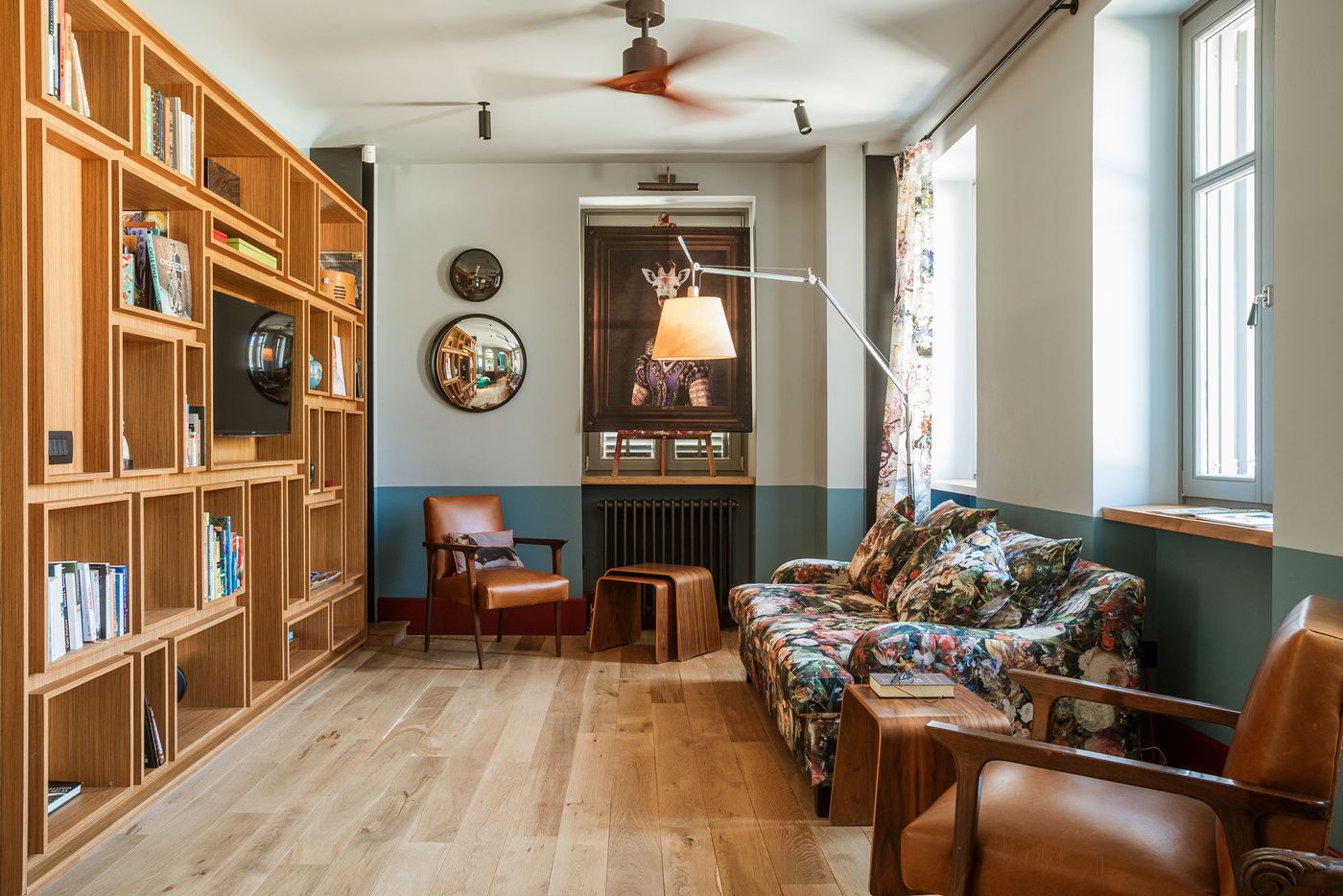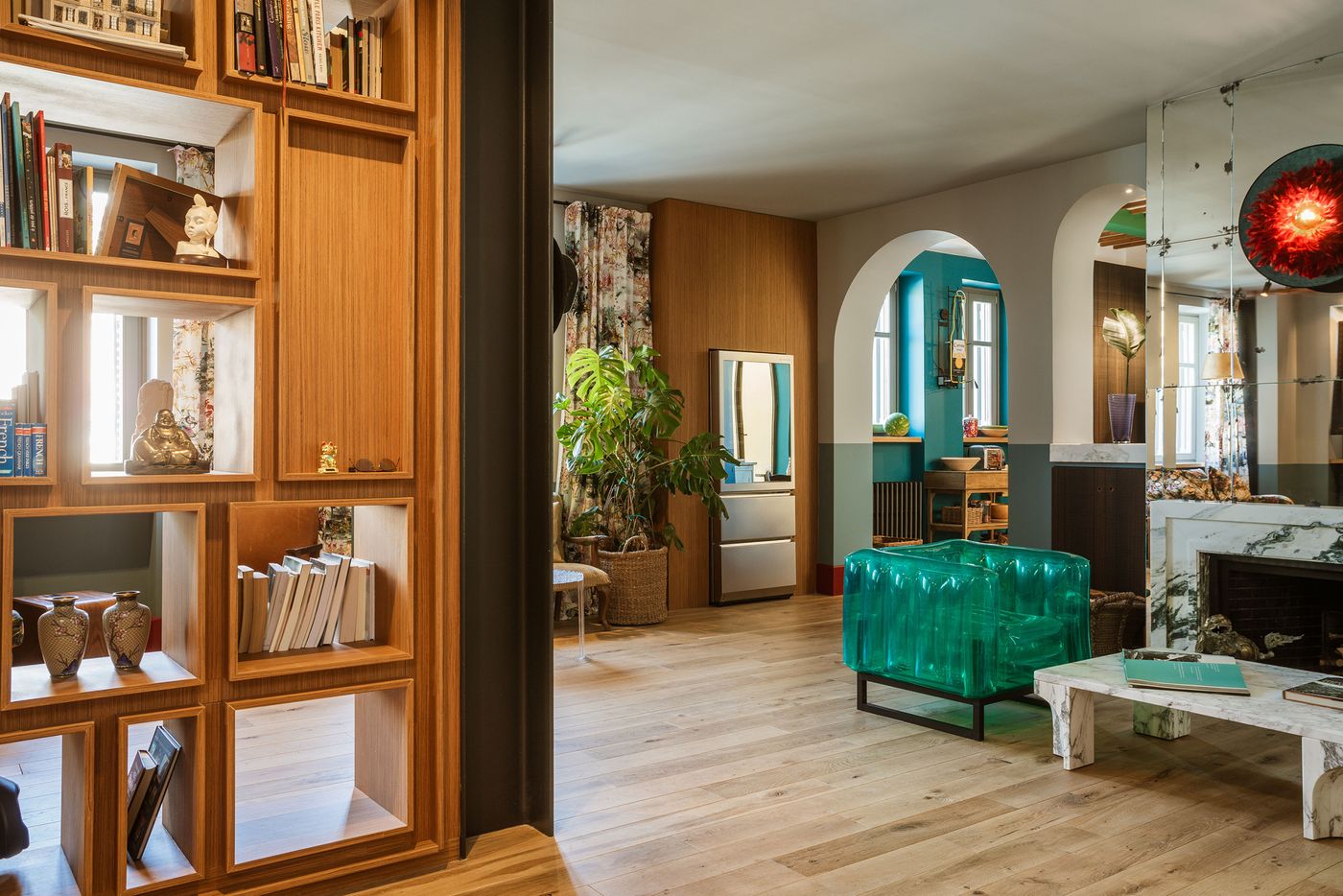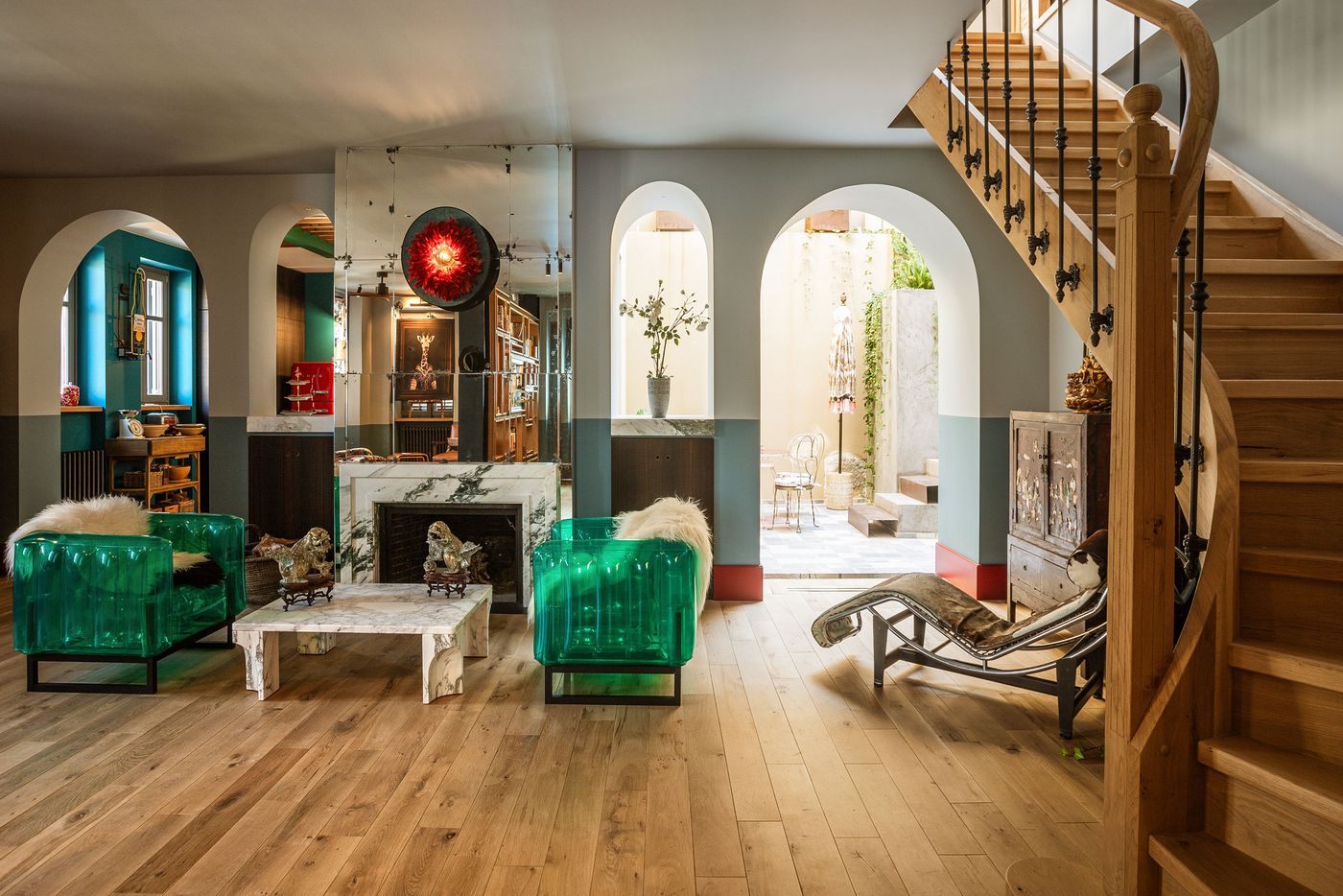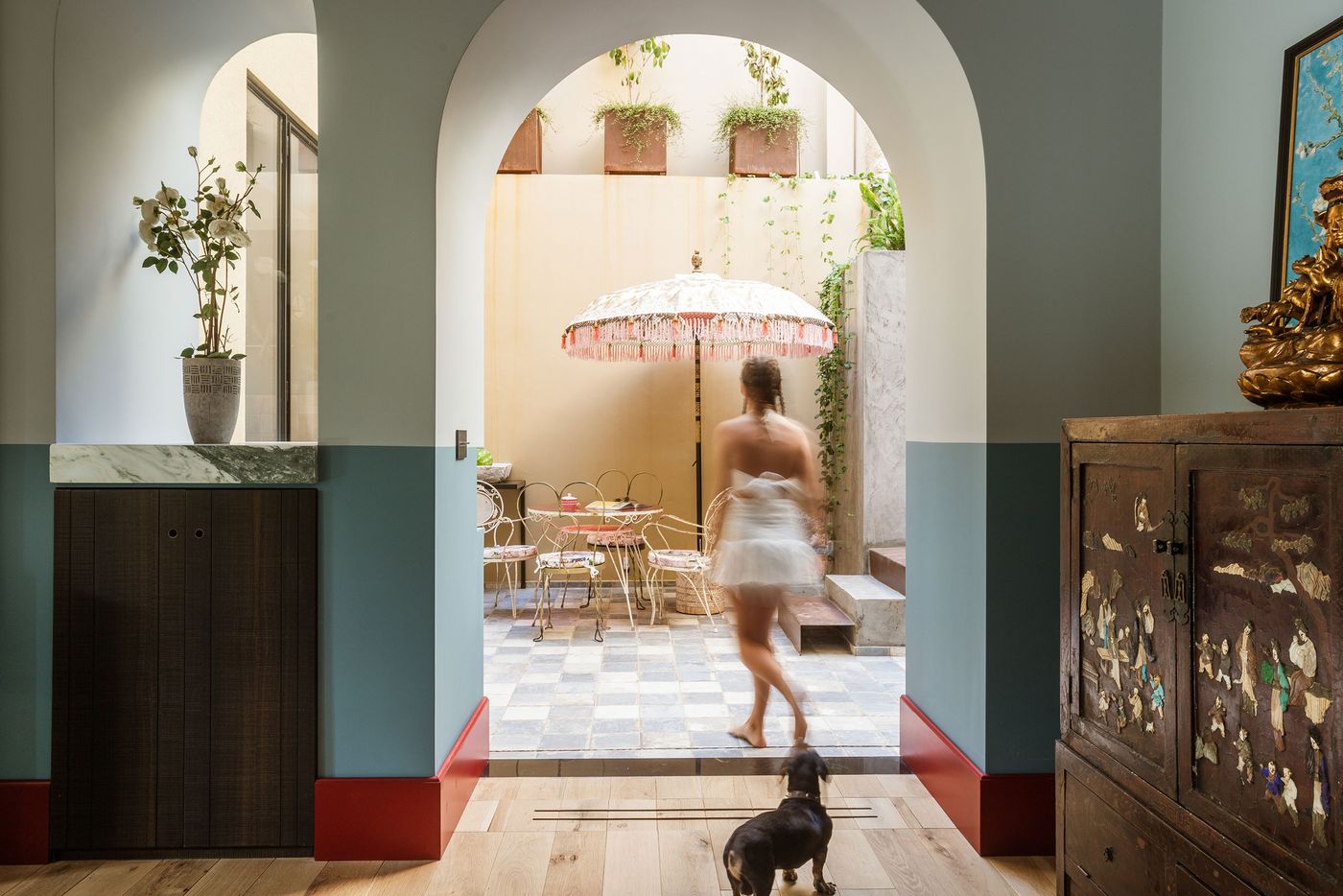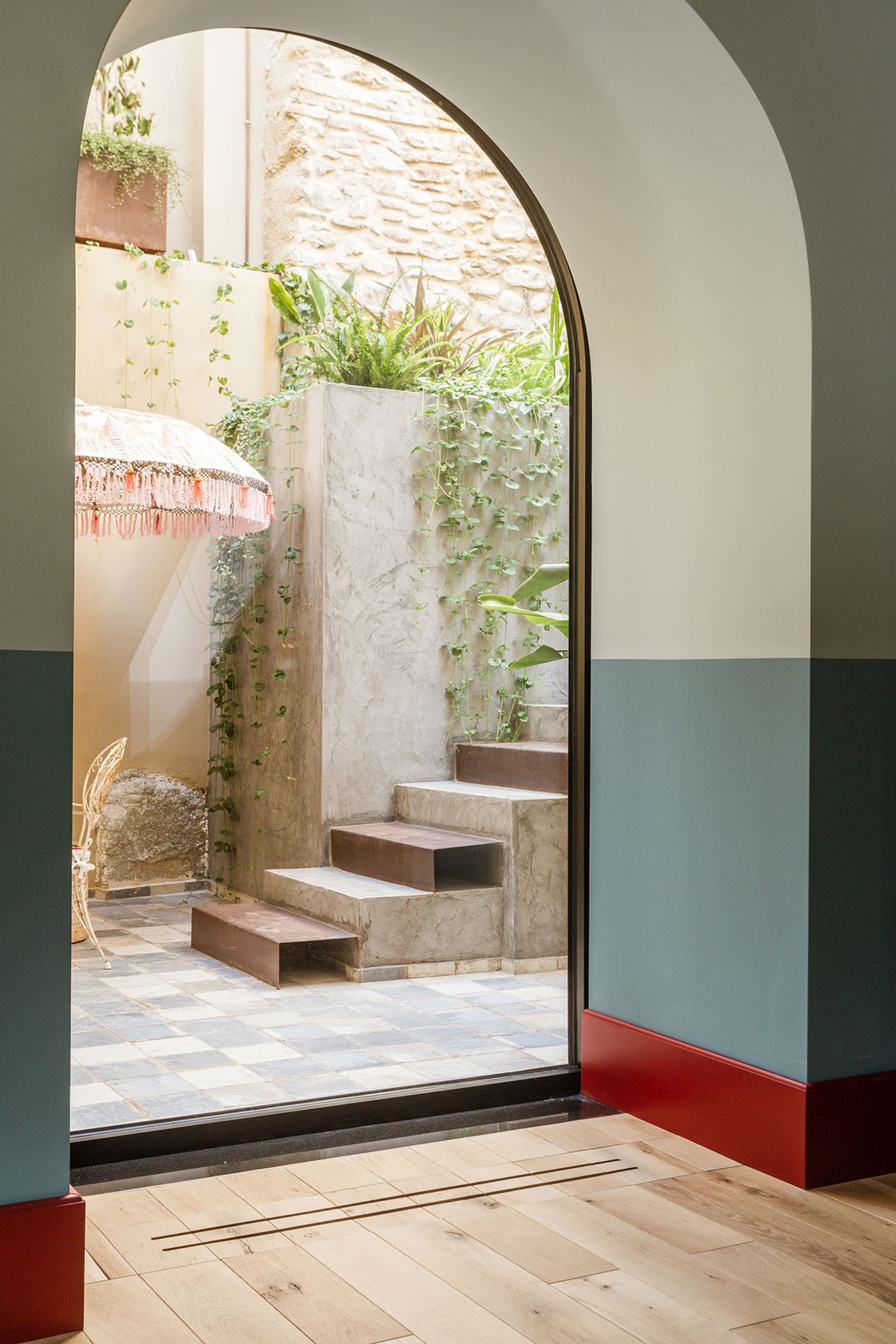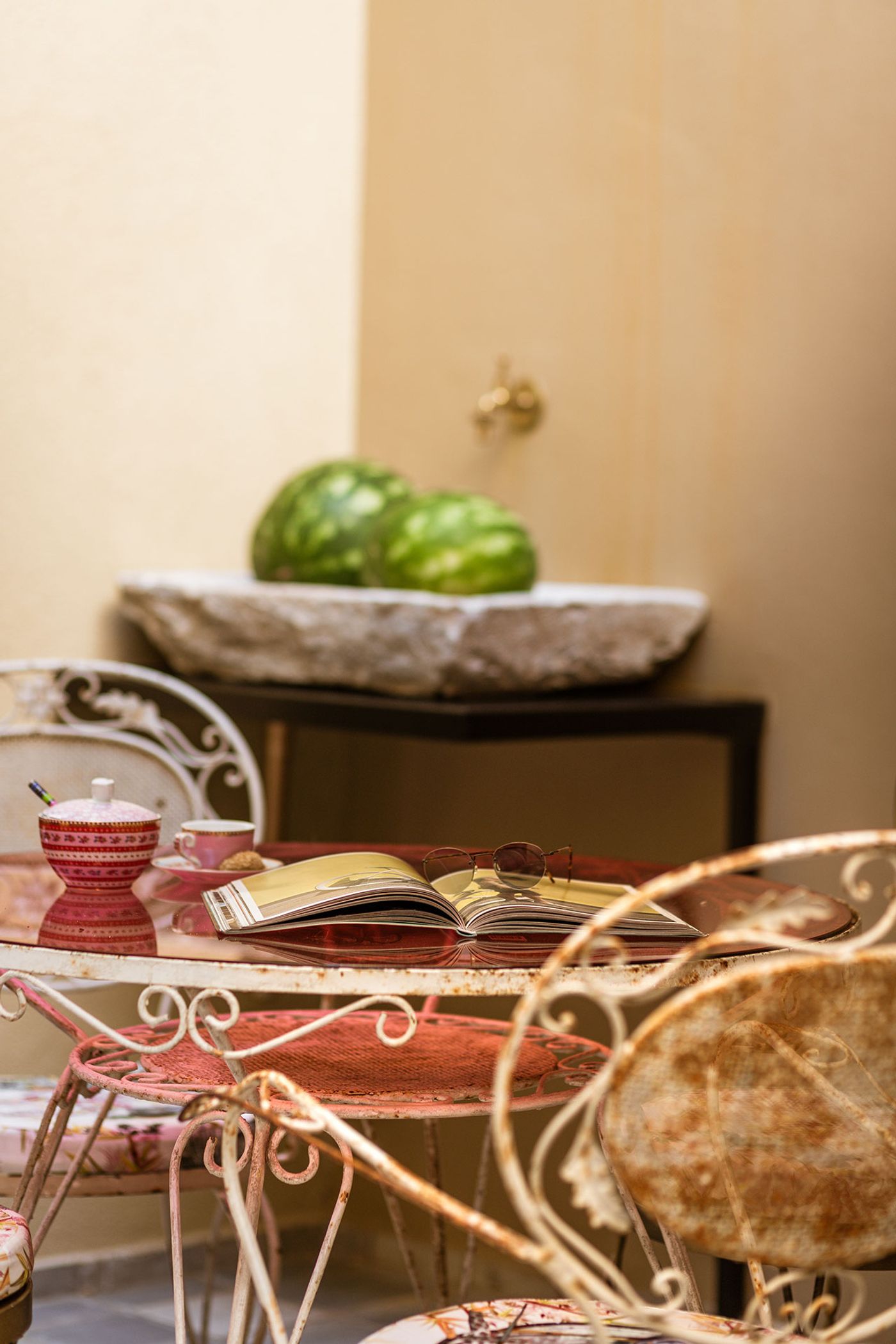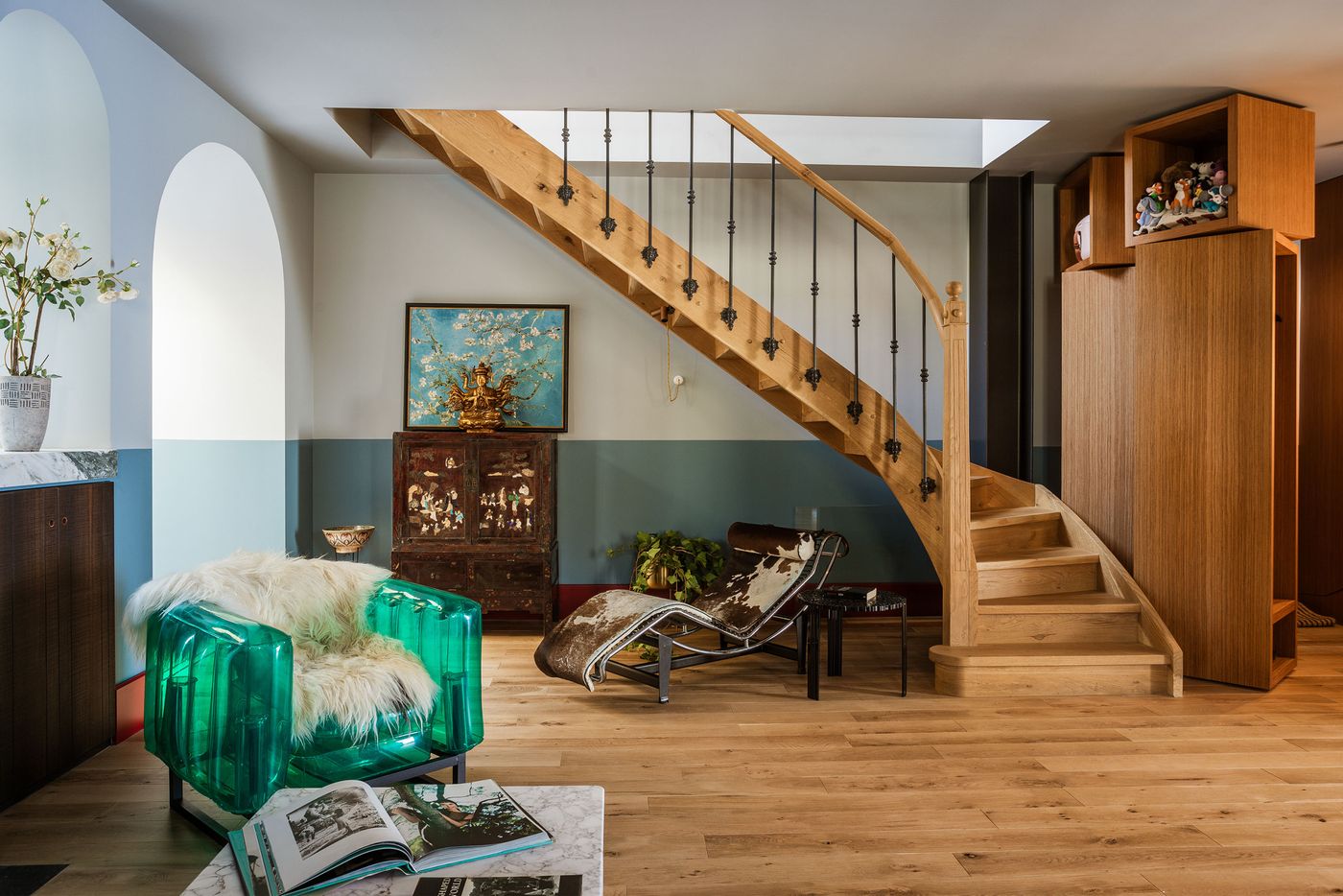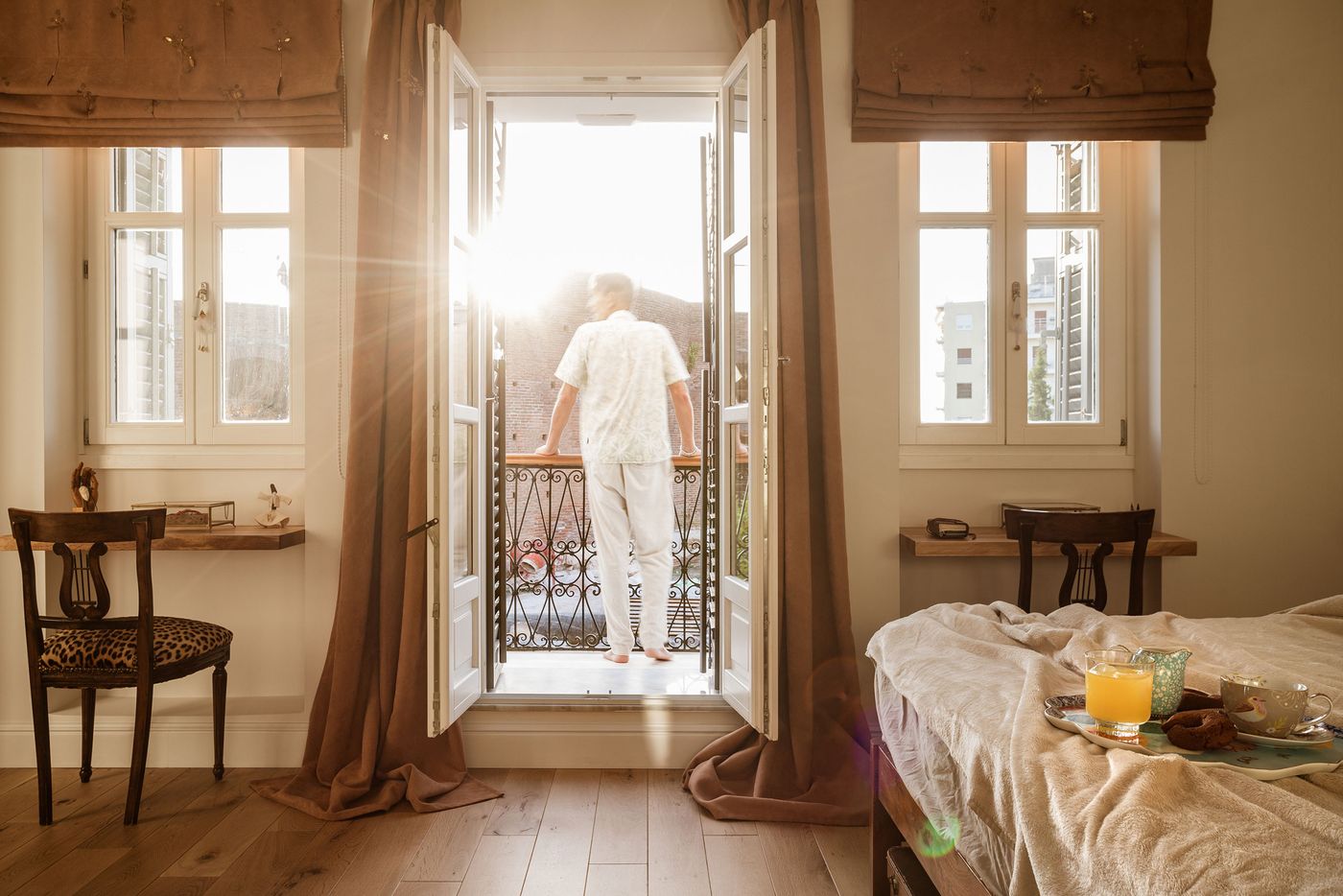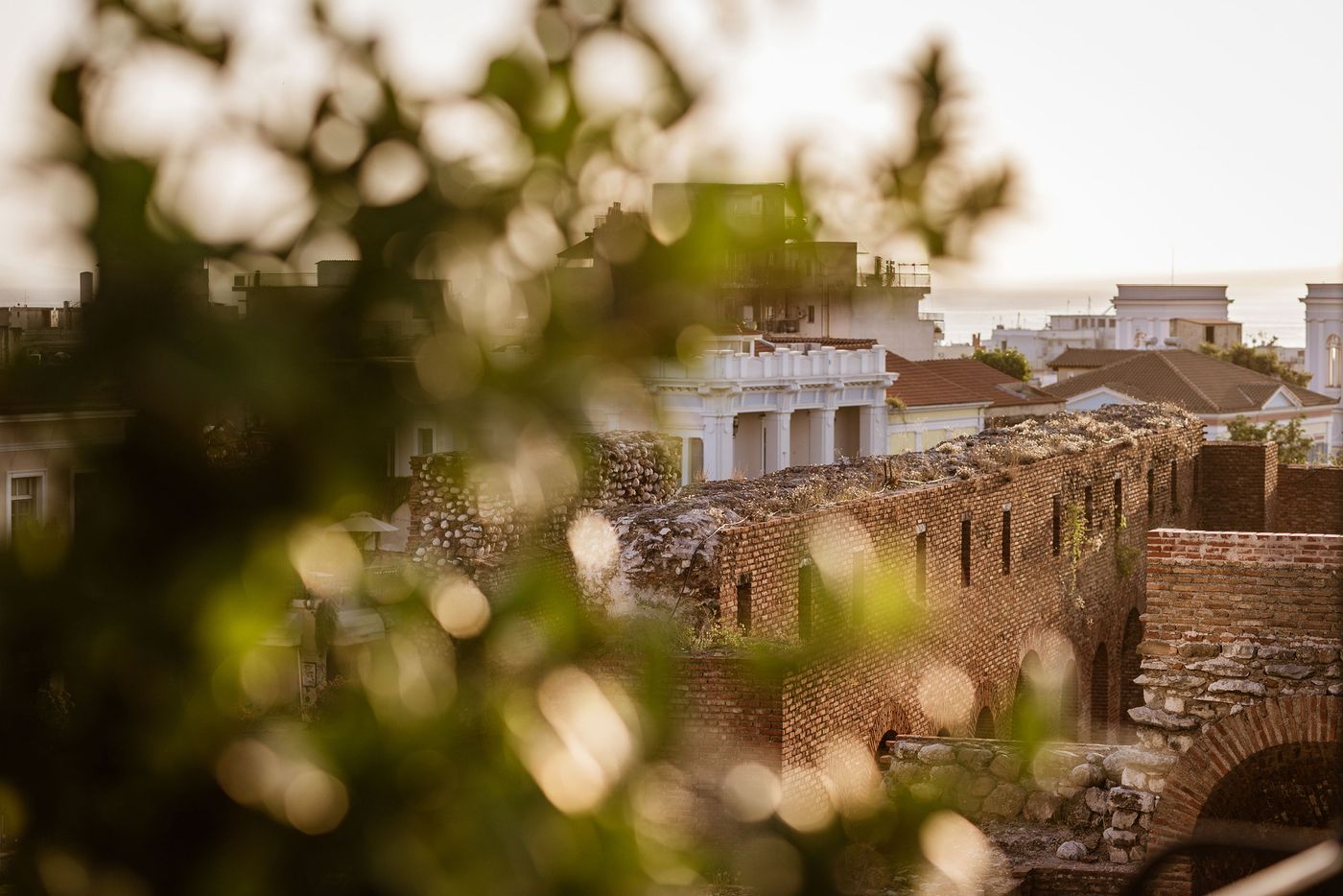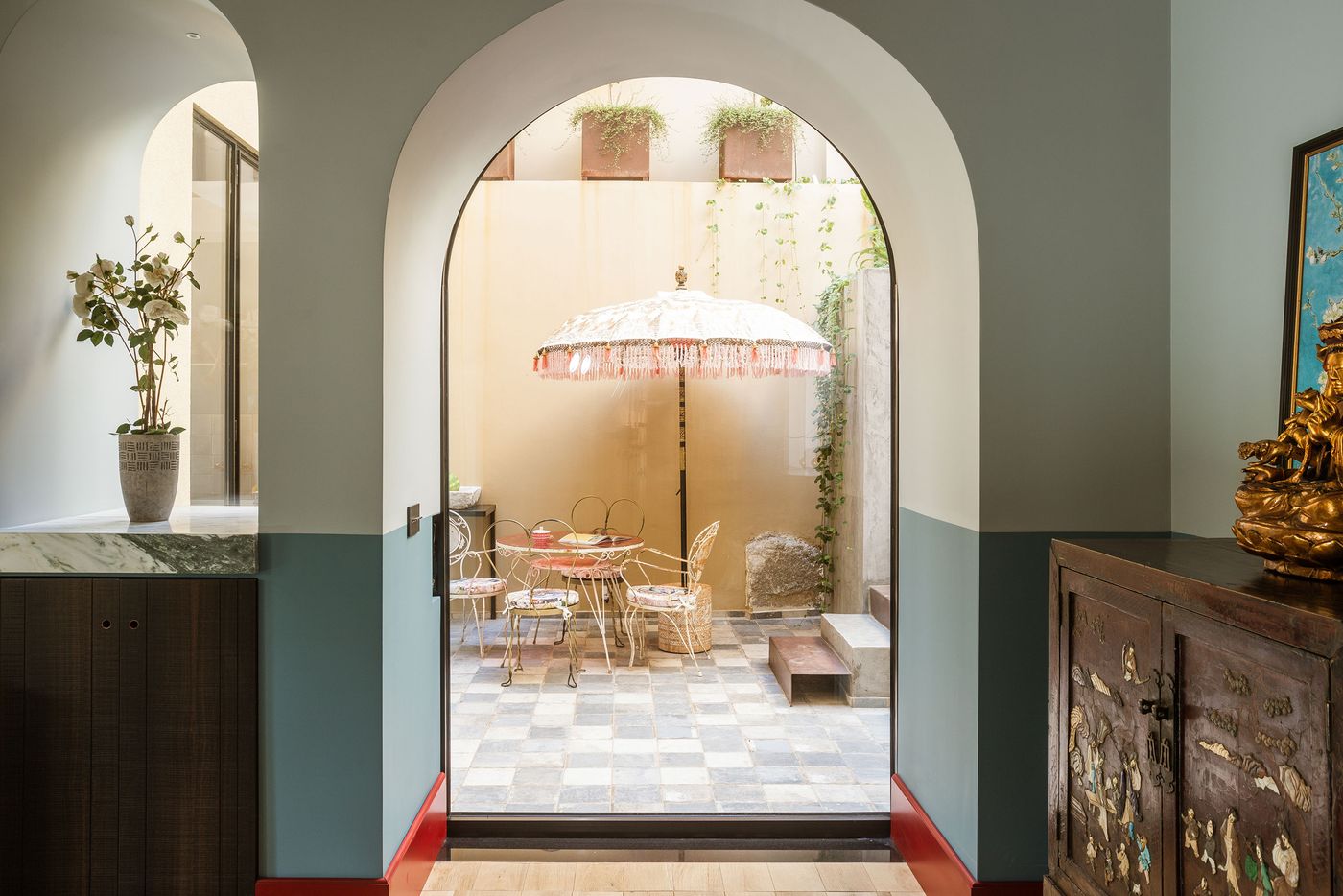
Cultural Heritage, Contemporary Design & Personal History Converse in Michel Tsiantar's Renovated Home in Patras
Words by Eric David
Location
Patras, Greece
Cultural Heritage, Contemporary Design & Personal History Converse in Michel Tsiantar's Renovated Home in Patras
Words by Eric David
Patras, Greece
Patras, Greece
Location
It’s an unfortunate reality that the majority of Neoclassical houses that were built in the late 19th and early 20th centuries in Greece have since been torn down and replaced by non-descript modern buildings. Nevertheless, backed by strident conservation laws enacted in the 1990s, an estimated 20% of these historic properties still stand, albeit many of them in poor condition, the by-product of overlapping bureaucratic, economic and social factors that make renovating them a herculean task. Anglo-French designer and avowed philhellene Michel Tsiantar would like to change that, which is why he founded Bbdesign, a collective of dedicated architects, designers, engineers and lawyers who assist owners and developers with restoring historic buildings. Bbdesign’s latest project, the restoration of two 19th century Neoclassical houses in the port of Patras, is one close to Tsiantar’s heart, as the renovated property is now his home where he lives with his wife and two daughters.
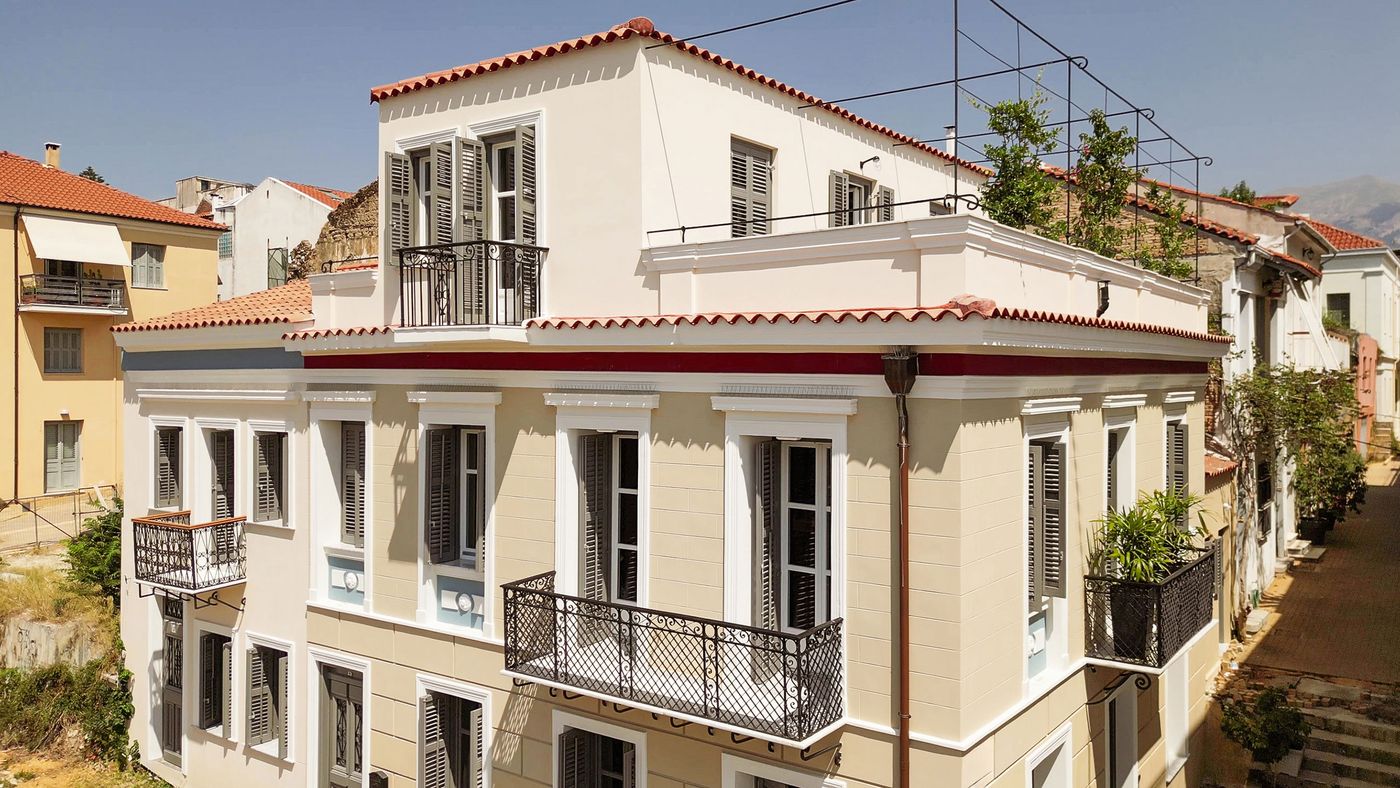
Photography © Costas Mitropoulos
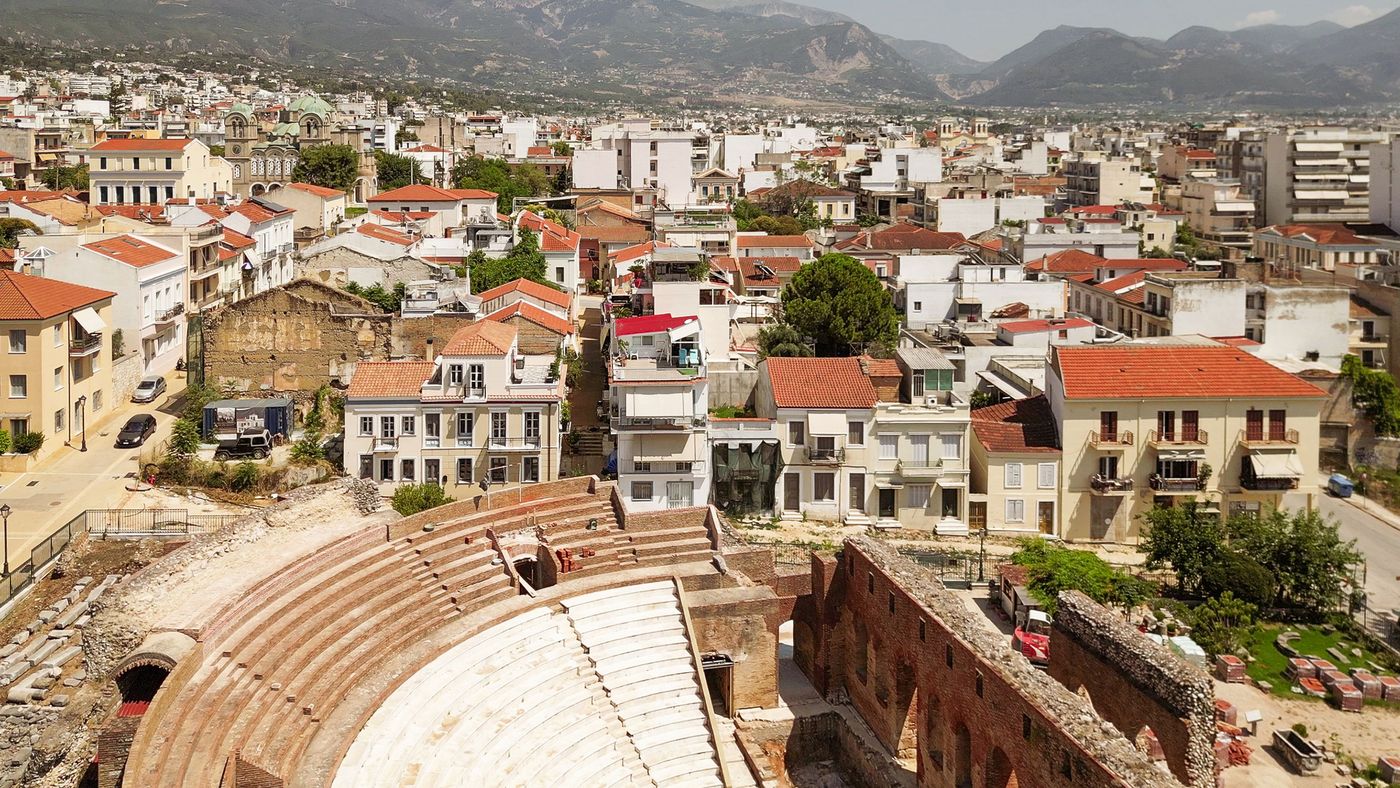
Photography © Costas Mitropoulos
Cultural Fusion: Michel Tsiantar's Renovated Home in Patras, Greece
Abandoned for thirty years, the two buildings were on the verge of collapse when Tsiantar spotted them a few years ago. Neither their derelict state though, nor the fact that they sit within a live archaeological dig, discouraged him from acquiring them in 2018. Indeed, it turned out to be “the most challenging recovery and restoration of a historic building in the last two decades in the city of Patras” as he says. Fast forward to the present, the house’s painstakingly refurbished Neoclassical exterior gives way to soulful interiors that combine the property’s historic character with a forward-looking sensibility thanks to a mix-and-max décor of antique and contemporary pieces, splashes of colour, and surprising bespoke features such as revolving wardrobe units and a magnetic picture wall. Exposed sections of the original masonry walls that reveal how ancient marble fragments were resused as construction materials, and views of the adjacent ancient Roman Odeio further add to the house’s unique appeal. Yatzer recently caught up with the designer to talk specifically about Odeio House, as the project is called, along with his ‘hands on’ approach to design, multicultural background and his passion for restoring Greece’s architectural heritage.
(Answers have been condensed and edited for clarity.)
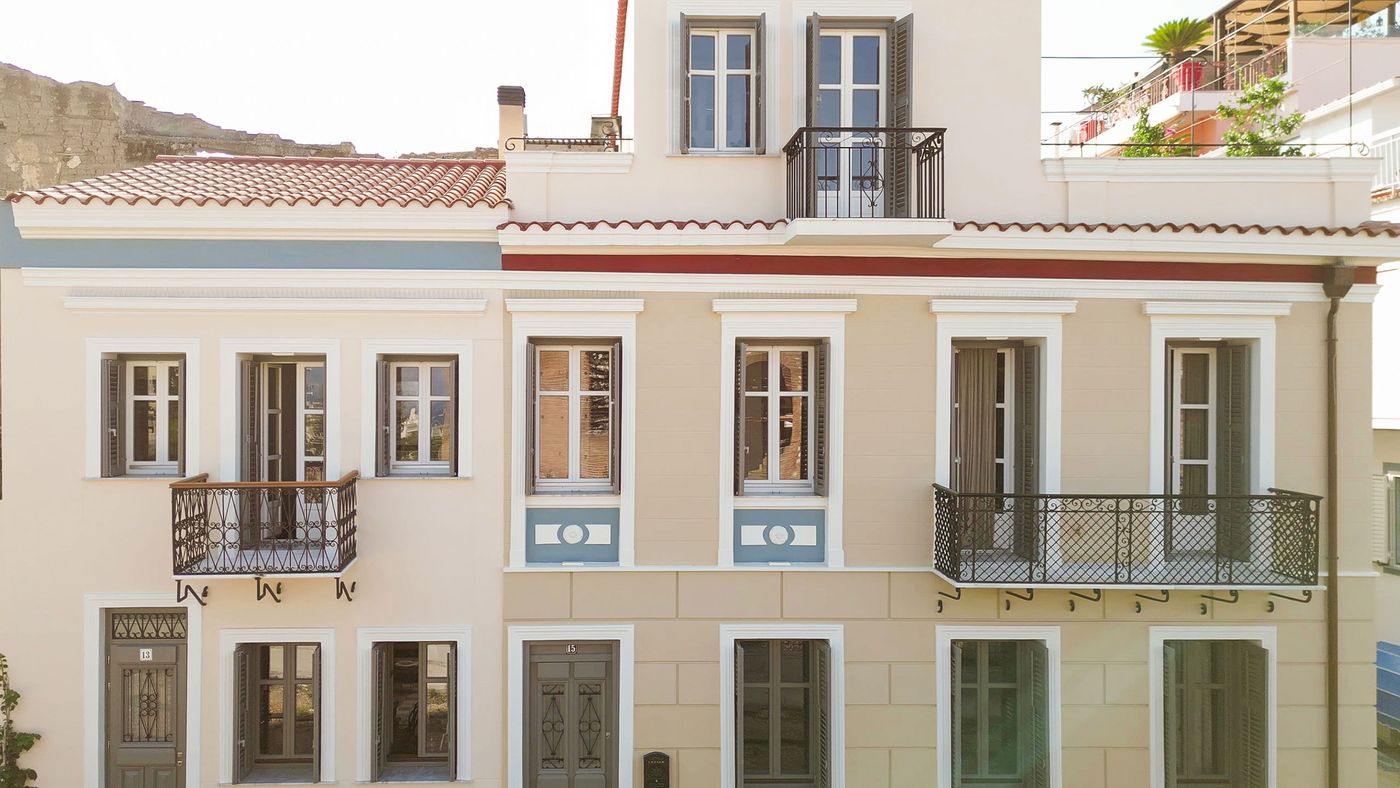
Photography © Costas Mitropoulos
Talk us through the story behind the Odeio House. When and under which circumstances did you come across the property? What made you decide to restore it into a home for your family?
You’re taking me back a bit now but I do remember it was a case of a ‘coup de coeur’. I first spotted the two Neoclassical houses while watching a theatrical performance with my wife at the ancient Roman theatre in Patras. We were sitting on the last row on the top tier and looked down and saw them. To our right was the magnificent view overlooking the town, the sea and the gulf of Patras and, as if there was still any doubt in our minds, to our left, the full moon rose above the domes of the Temple of Pantokratoras. Don’t ask me what the play was about, I was already working on the design project.
Which features of the property captured your interest besides its proximity to the ancient Roman amphitheatre?
Absolutely everything. When I look at something, anything, long enough, I eventually find it fascinating. I have never been bored in my life – as a child I didn’t even know what boredom meant. So I knew these two, endearing, sad and decrepit Neoclassical mansions were going to be an endless source of inspiration and curiosity for my designer brain. Creativity is a gene, a gift, and it never leaves you. I have to thank my parents for that, you could say I chose them well!
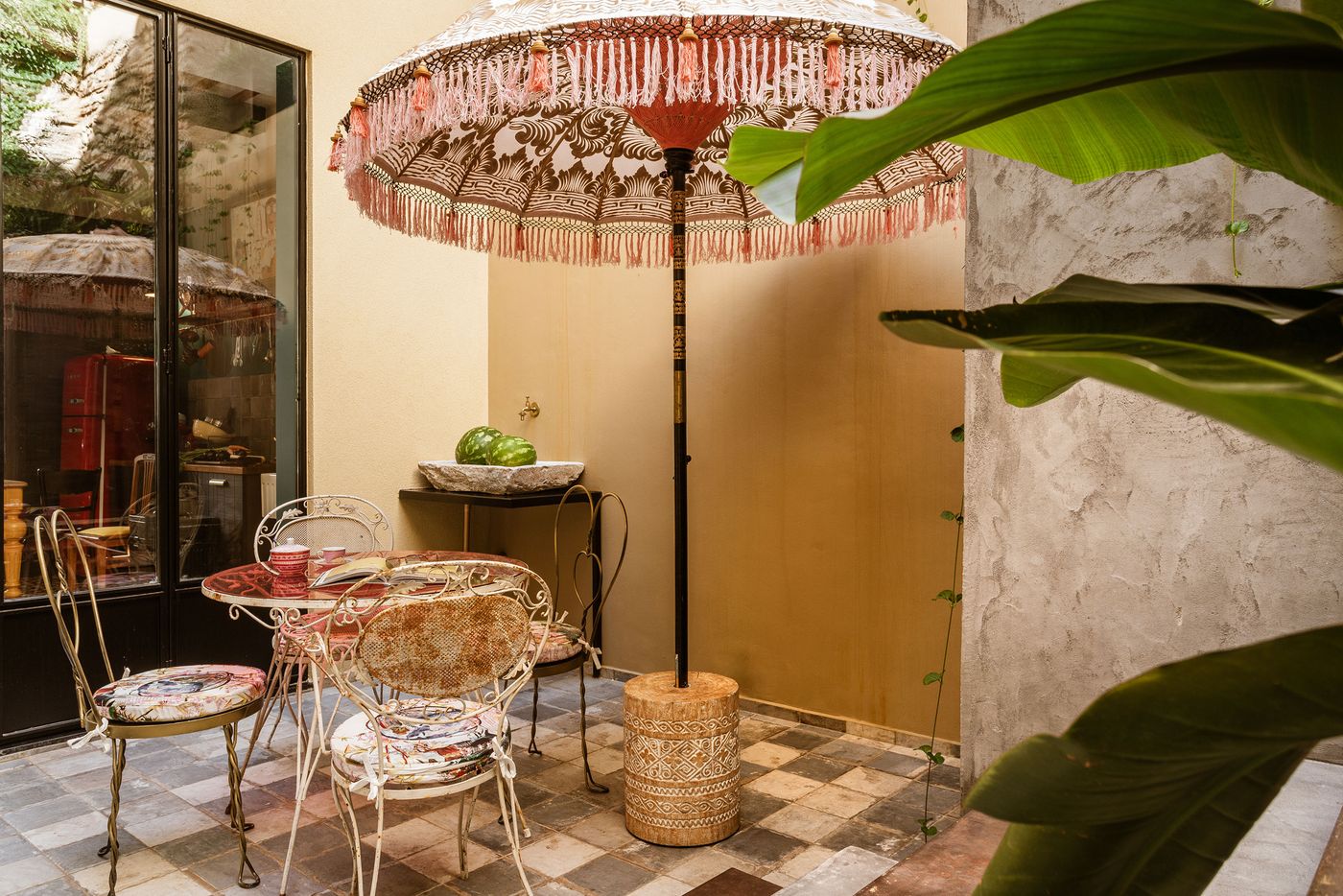
Photograpy © Costas Mitropoulos
What state were the two houses in when you found them?
The two houses were on the verge of collapsing. They had not been lived in for over thirty years. Most of the roofs had caved in and there were cracks in the structural walls that I could crawl through. However, this turned out to be a blessing, as over time, their market price dropped to the point where we could afford to make an offer to buy them.
When it comes to renovating landmarked buildings, architects and designers walk a fine line between faithful restoration and the demands of modern living. How did you approach this issue? Is there room for creativity and innovation in such projects?
If it ain’t broke, don’t try and fix it. Certain fundamental building characteristics should absolutely not be challenged; it’s about respect. A house, and especially your home, belongs to its location and immediate surroundings. A New York loft belongs in Manhattan, a Haussmannian ‘pierre de taille’ in Paris, and a quaint thatched cottage will always deserve its place in the Cotswolds. This doesn’t mean that you shouldn’t customize it to your needs and wishes, but ultimately a renovation/restoration should improve and embellish, not contradict a property. I also believe that the element of surprise is underestimated. Integrating something unexpected and joyful into your design generates emotions and memories. This is priceless.
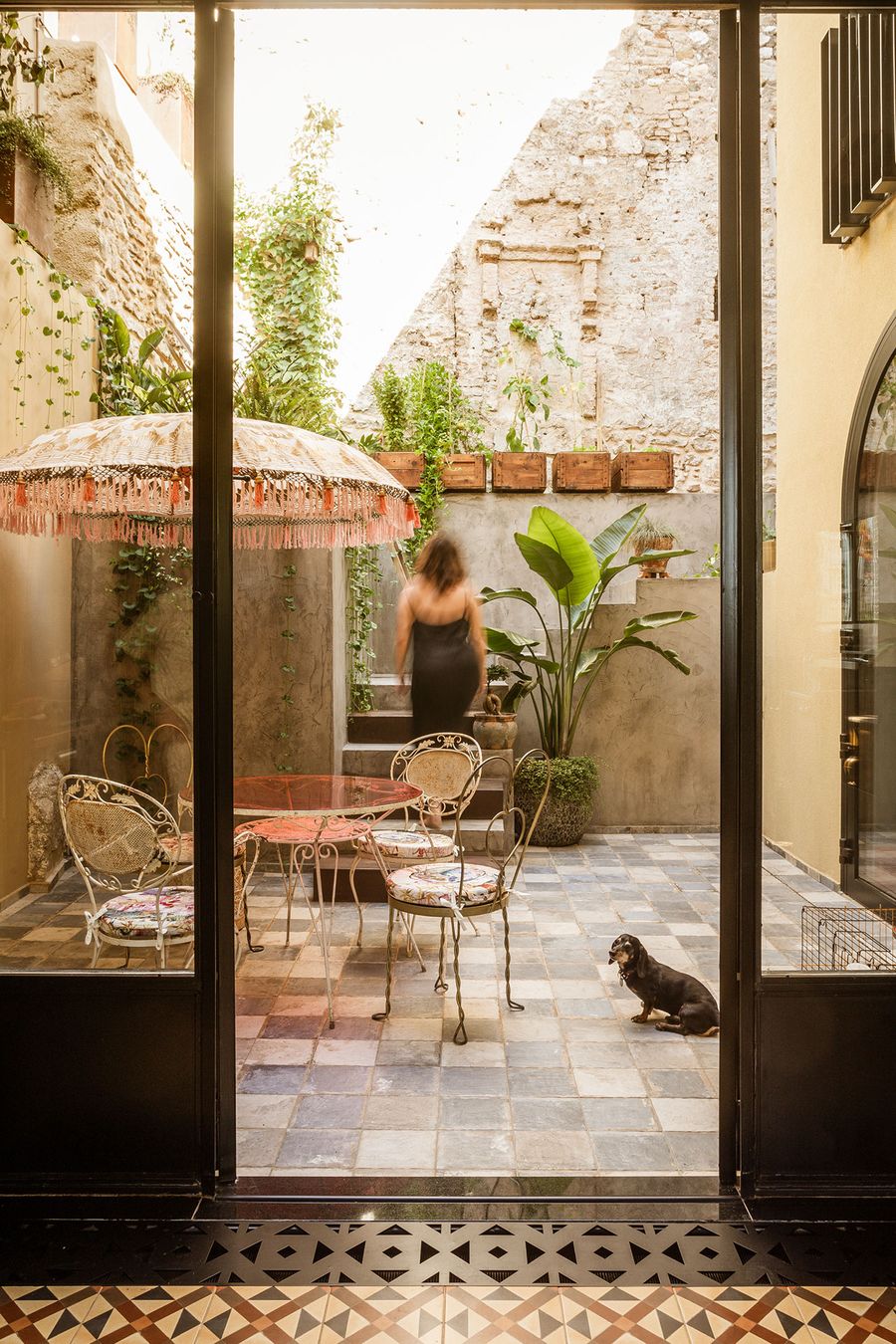
Photograpy © Costas Mitropoulos
What were the most challenging aspects of the restoration process?
Asides from navigating the extensive bureaucracy typical of architecturally sensitive projects, the key challenge was effective project management. Good project management is the key to a successful build. Homes have soul and a happy build makes for a happy home. Ensuring that the tradespeople are content and motivated while making sure they work hard and keep up with each other’s pace is a skill. Unforeseen issues inevitably arise, the secret is addressing them in a way that maintains a happy rhythm, one which everybody can dance to.
The interiors retain the buildings’ Neoclassical aura yet feel quite modern thanks to a mix-and-match sensibility. What is the philosophy behind the property’s interior design?
There is a Greek word ‘Anthropino’ which translates as human but also means personal and individual. A home should be built around you and not the other way round. Scale is paramount. Too big or too small really bothers me. This was my design approach, cosy but structured, flashy but with humility, traditional with built-in smart high tech, humour without being vulgar.
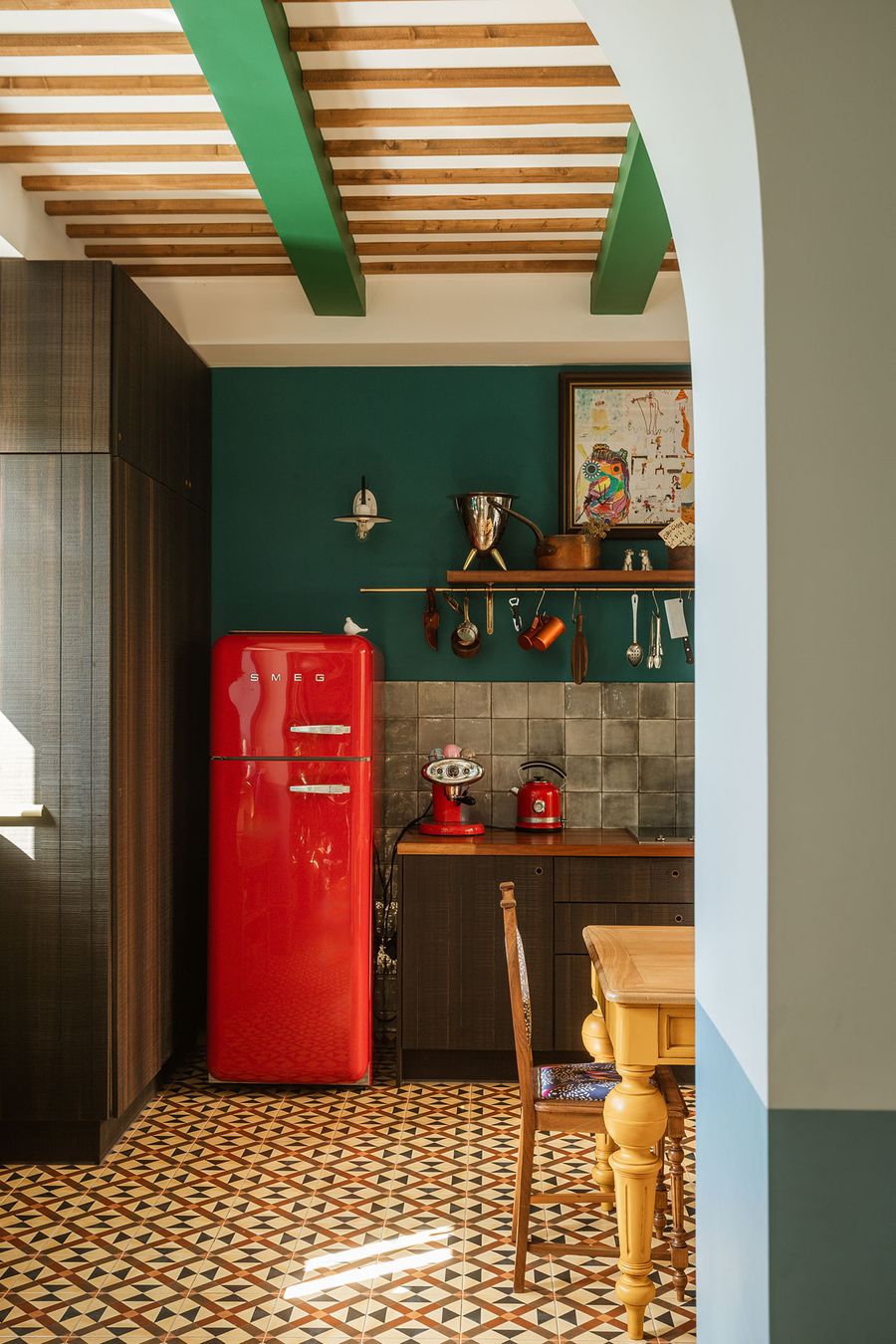
Photograpy © Costas Mitropoulos
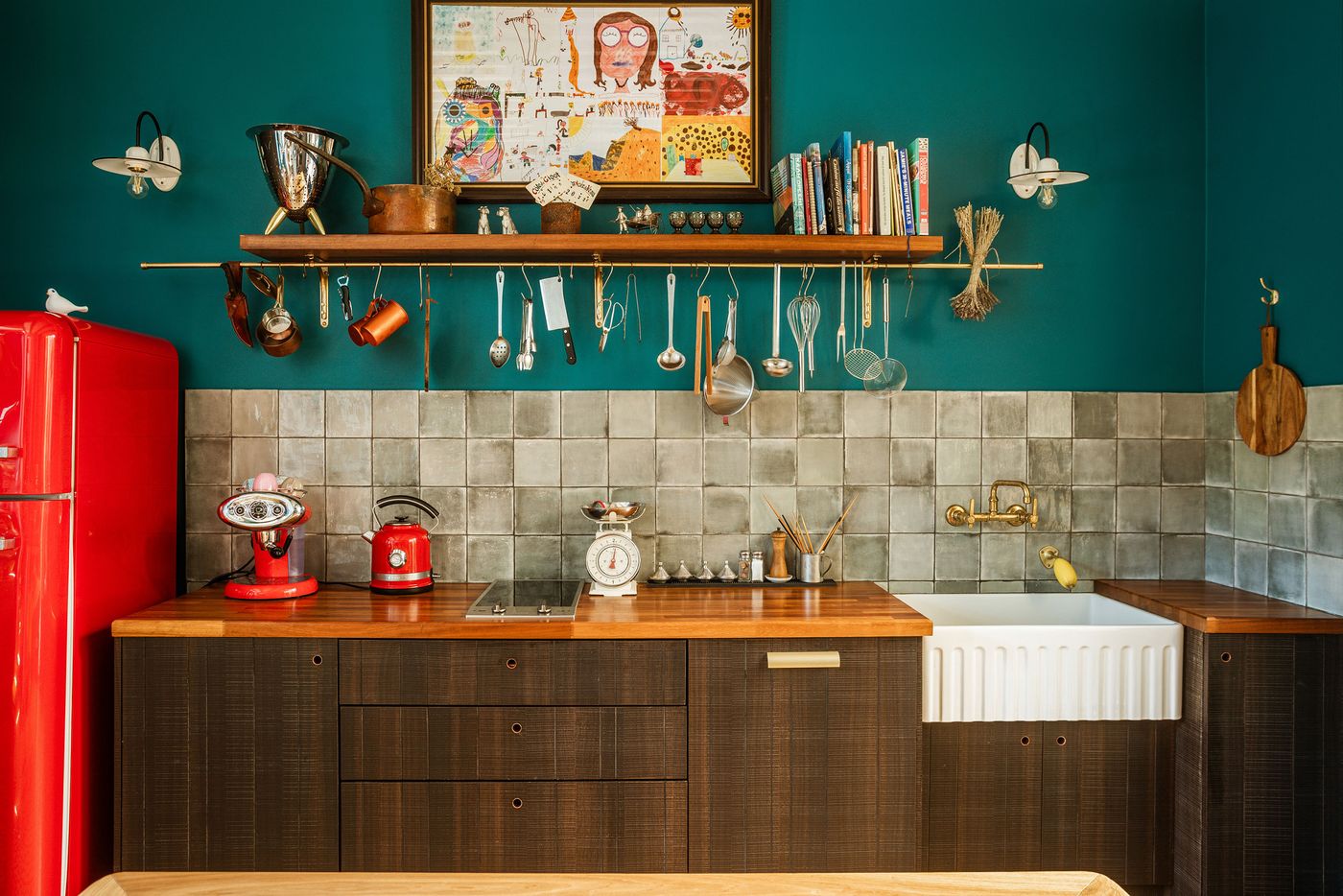
Photograpy © Costas Mitropoulos
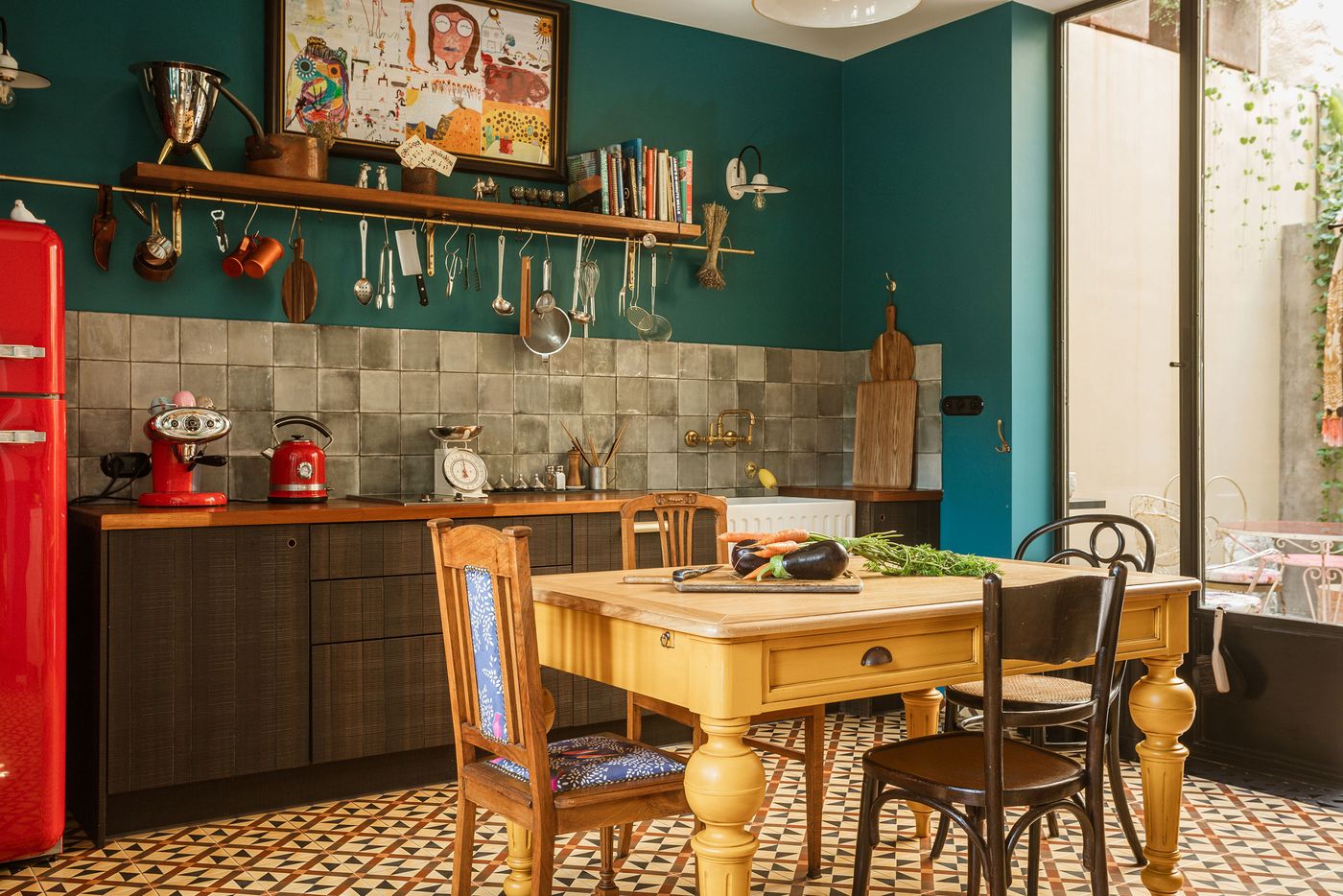
Photograpy © Costas Mitropoulos
Are there any custom-designed elements?
The revolving wardrobes and partition bookcase in the entrance hallway were quite a challenge and have proved to be not only beautiful, but incredibly functional. Wiring the motherboard for all the smart tech through the bookcase was practical, magical and invisible. I’m proud of the bespoke staircases too. Space was at a premium but we pulled it off. The Crystallina marble fireplace from Naxos and the Carrara marble coffee table were also bespoke design. Finally, there’s the large arched patio door which opens 180 degrees and appears totally frameless from inside.
The house is eclectically furnished with a mix of antique and contemporary pieces. Which are your favourites and why?
To start with, a few, cherished family heirlooms which are proudly showcased throughout the house. Sporting influences from Indochina and French West Africa, a testament to my parents’ adventurous past, these precious pieces are balanced with contemporary and forward-looking elements such as two inflatable Mojow armchairs, neon lighting and plastic Kartell side tables. How all this works together is a bit of a mystery, but it’s also my talent, culture and ancestry. My forefathers were daring, risk takers and hard workers, this might be one of the secrets to a successful mix and match.
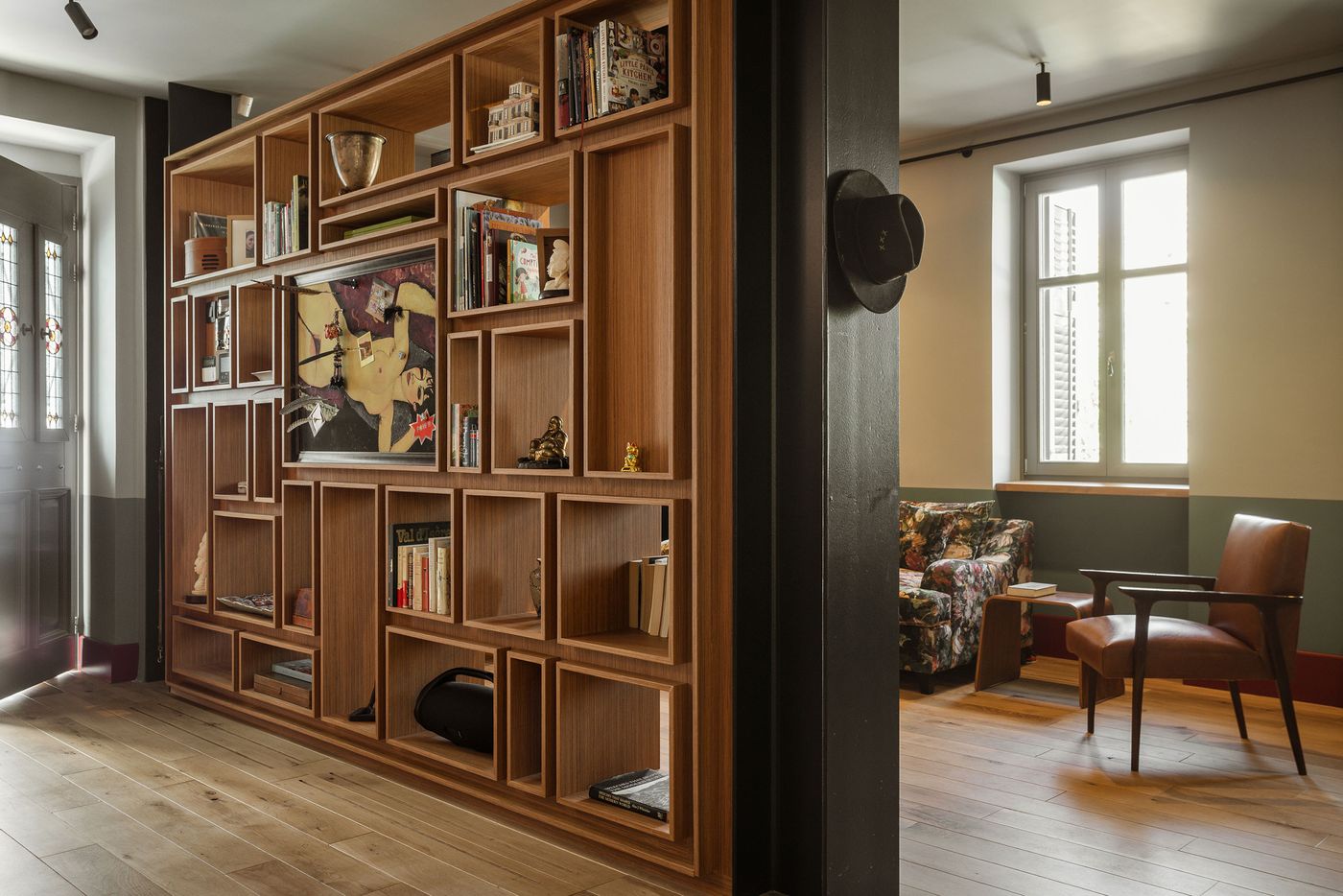
Photography © Costas Mitropoulos
Are there any custom-designed elements?
The revolving wardrobes and partition bookcase in the entrance hallway were quite a challenge and have proved to be not only beautiful, but incredibly functional. Wiring the motherboard for all the smart tech through the bookcase was practical, magical and invisible. I’m proud of the bespoke staircases too. Space was at a premium but we pulled it off. The Crystallina marble fireplace from Naxos and the Carrara marble coffee table were also bespoke design. Finally, there’s the large arched patio door which opens 180 degrees and appears totally frameless from inside.
The house is eclectically furnished with a mix of antique and contemporary pieces. Which are your favourites and why?
To start with, a few, cherished family heirlooms which are proudly showcased throughout the house. Sporting influences from Indochina and French West Africa, a testament to my parents’ adventurous past, these precious pieces are balanced with contemporary and forward-looking elements such as two inflatable Mojow armchairs, neon lighting and plastic Kartell side tables. How all this works together is a bit of a mystery, but it’s also my talent, culture and ancestry. My forefathers were daring, risk takers and hard workers, this might be one of the secrets to a successful mix and match.
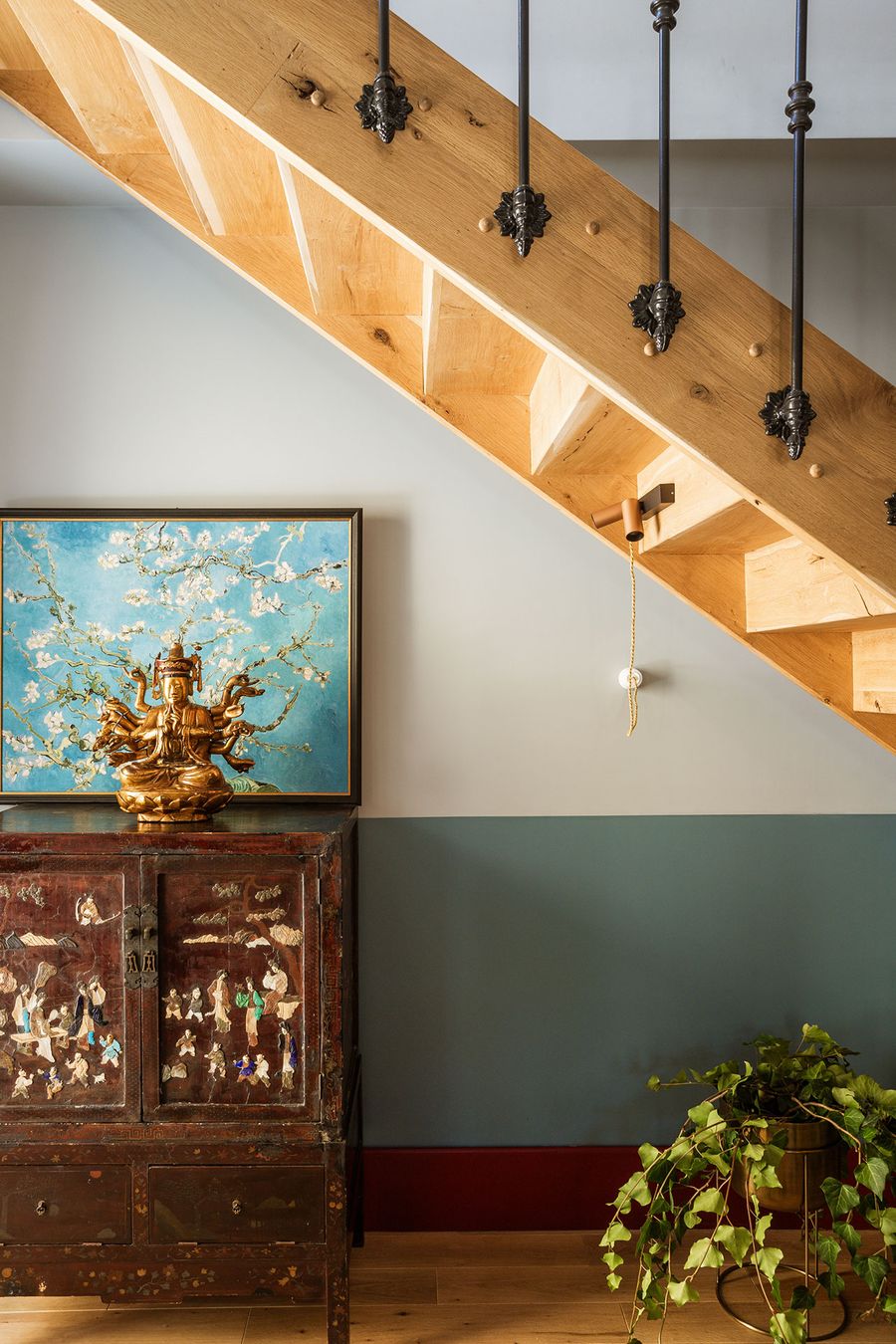
Photograpy © Costas Mitropoulos
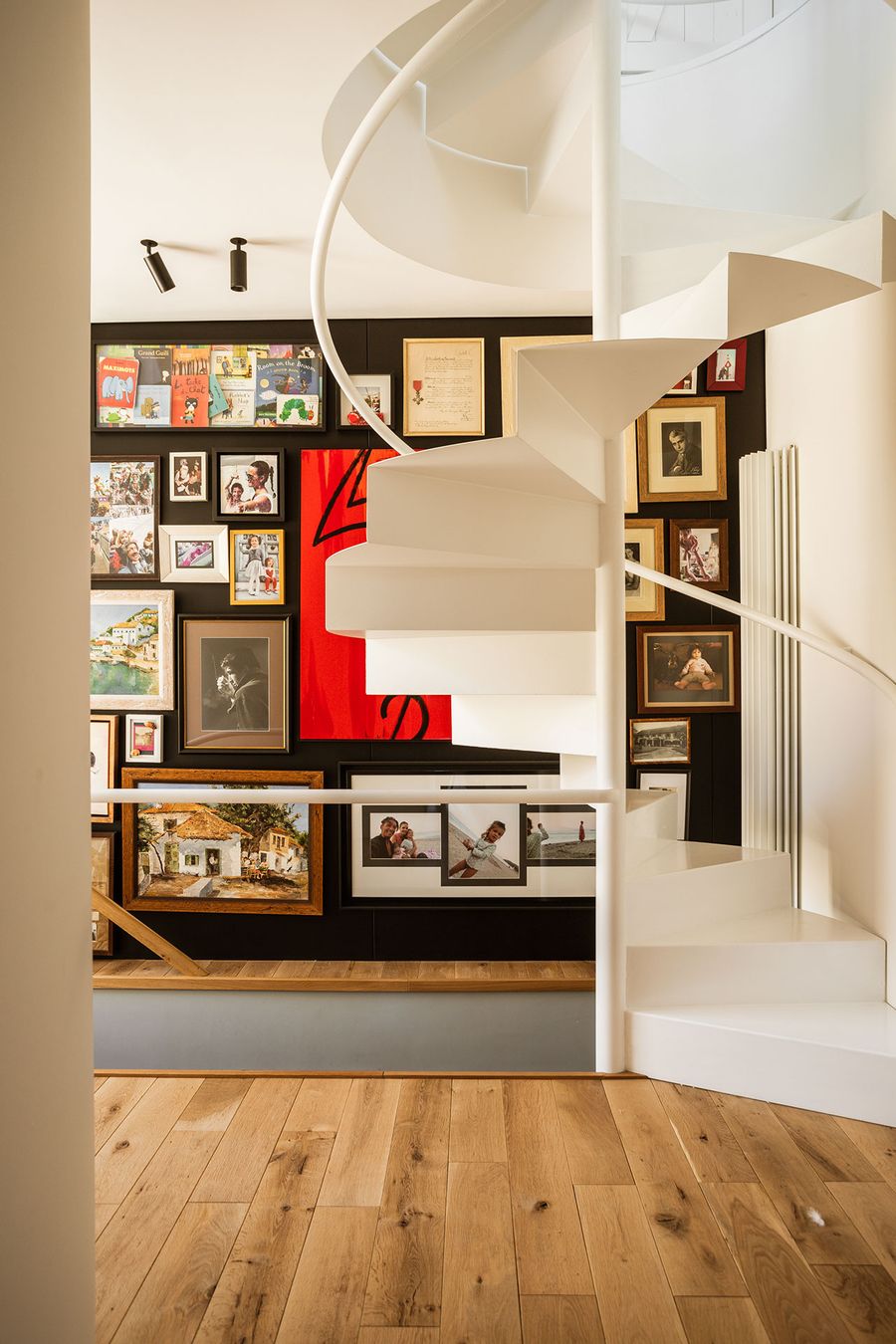
Photograpy © Costas Mitropoulos
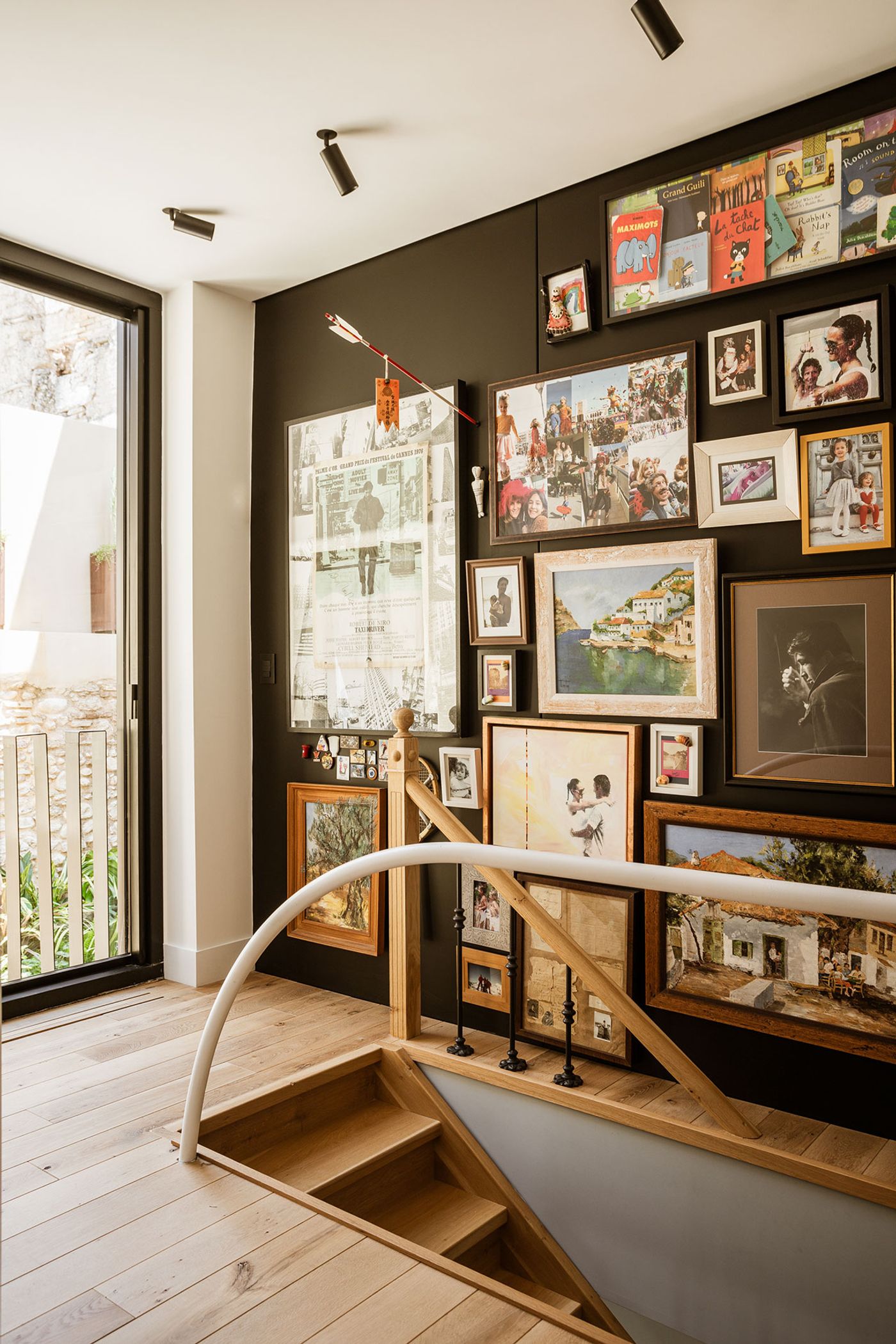
Photograpy © Costas Mitropoulos

Photograpy © Costas Mitropoulos
You place a great value on the initial hand-drawings during the early stages of the design process. Is this just a matter of creative freedom or are there other aspects that you then find useful?
I was part of the last generation to graduate from Manchester without access to computers – a dying breed, if you will – yet this background, I believe, makes me increasingly unique. There's a certain purity in having an analogue design mind that uses fingers, pens, paper and scalpels, and then harmonizing that with the incredible advancements of the digital age.
This approach results in designs that look, feel and breathe humanity, something that's becoming increasingly rare. My persistence in using manual tools, even though the final output will eventually come out of the computer, stems from their connection to our physicality.
As far as I know, buildings are still constructed by hand, and it seems that the hand still knows best what it's capable of creating.In my practice, it is those magical first, intuitive hand drawings that are essential in building the best possible relationship with the client. It is important that they understand the intuition or gesture that is the genesis of the design. It is a humble way of saying “I’m not quite sure what I’m doing yet, but I do have an understanding and feeling for the task”.
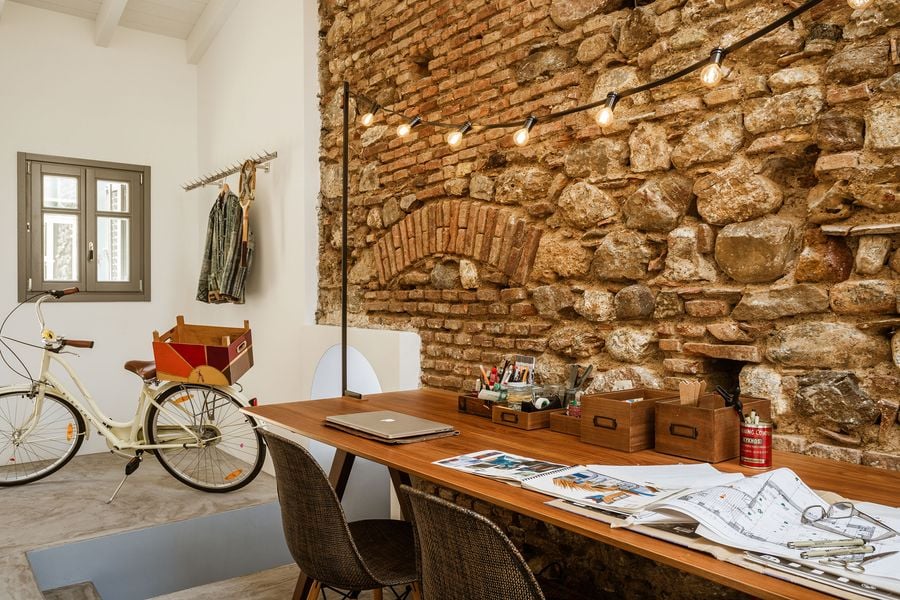
Photograpy © Costas Mitropoulos
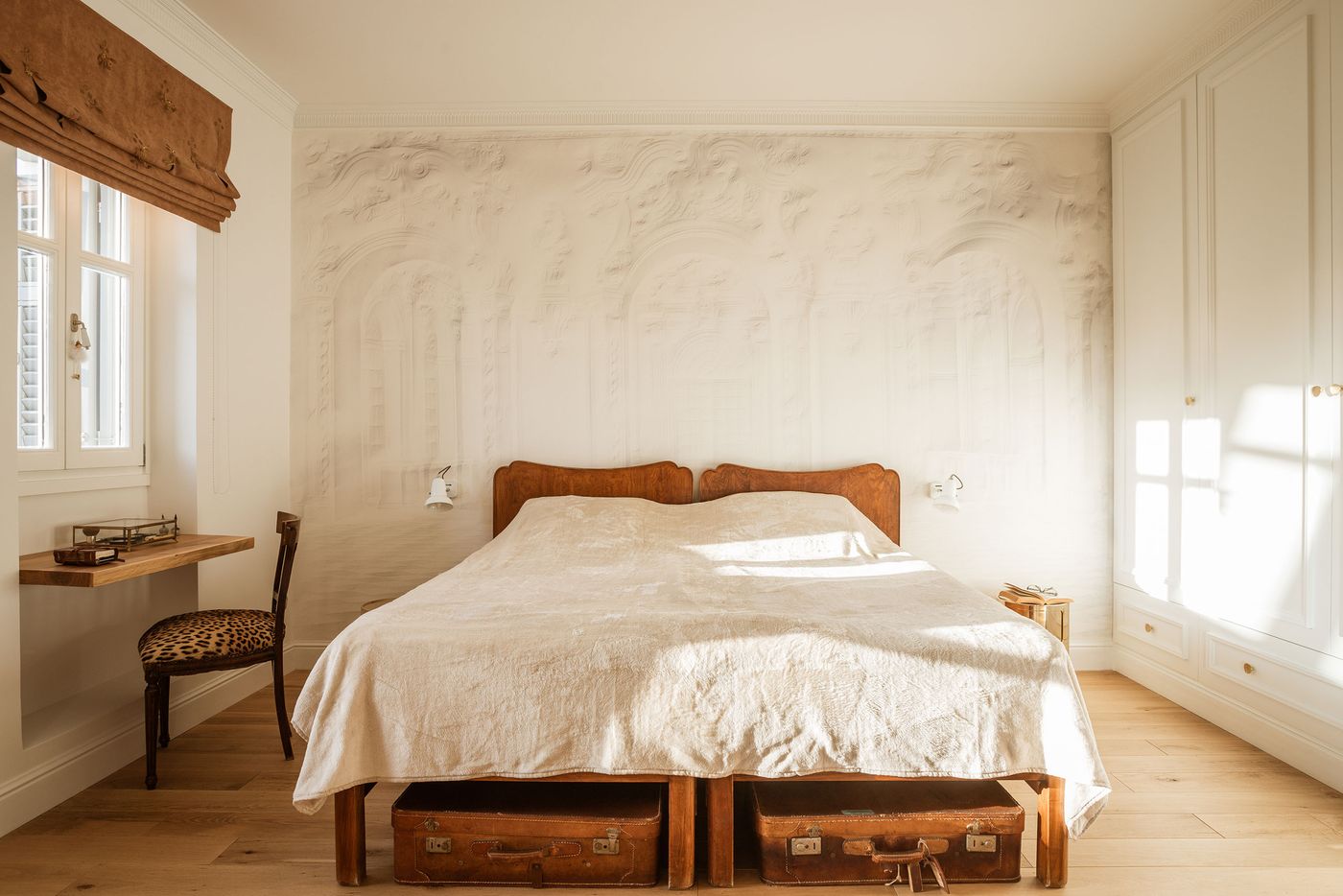
Photograpy © Costas Mitropoulos
Tell us a bit about your background. What sparked your interest in Greek culture?
My father was British Maltese but born and raised in Greece. He left for French West Africa as a young man and succeeded in trade and commerce, married my French mother and had two boys. Later, we moved to Manchester, England. Greek and French culture fuelled my creativity – I cannot think of a better combination. My elder brother chose to become an aarchitect so I thought it would be best to find something more eclectic. It was the early 1980s and I applied for a brand-new course called ‘Industrial Design Engineering’, a melting pot of forward-thinking semiologists obsessed with function, materials, shape and colour. My French roots steered me to Paris where I established my Design Studio. Today I am living my dream in Greece which has become my home. But it is also a dream for many visitors which inevitably led me to founding Bbdesign.
Speaking about Bbdesign, what is its purpose?
There are thousands of abandoned buildings throughout Greece. For me they are all opportunities waiting to be restored, brought back to life, cherished and passed on to future generations. But before embarking on such a project, there needs to be an element of trust in terms of who you work with before facing the challenge of restoring a piece of history. Bbdesign is all about ‘connecting the dots’ for those in need of a trustworthy network of multilingual professionals who are passionate about restoring Greece’s architectural heritage.What makes a house a home?Memories and soul. A home is an organism and life’s memories have to be breathed into its soul.
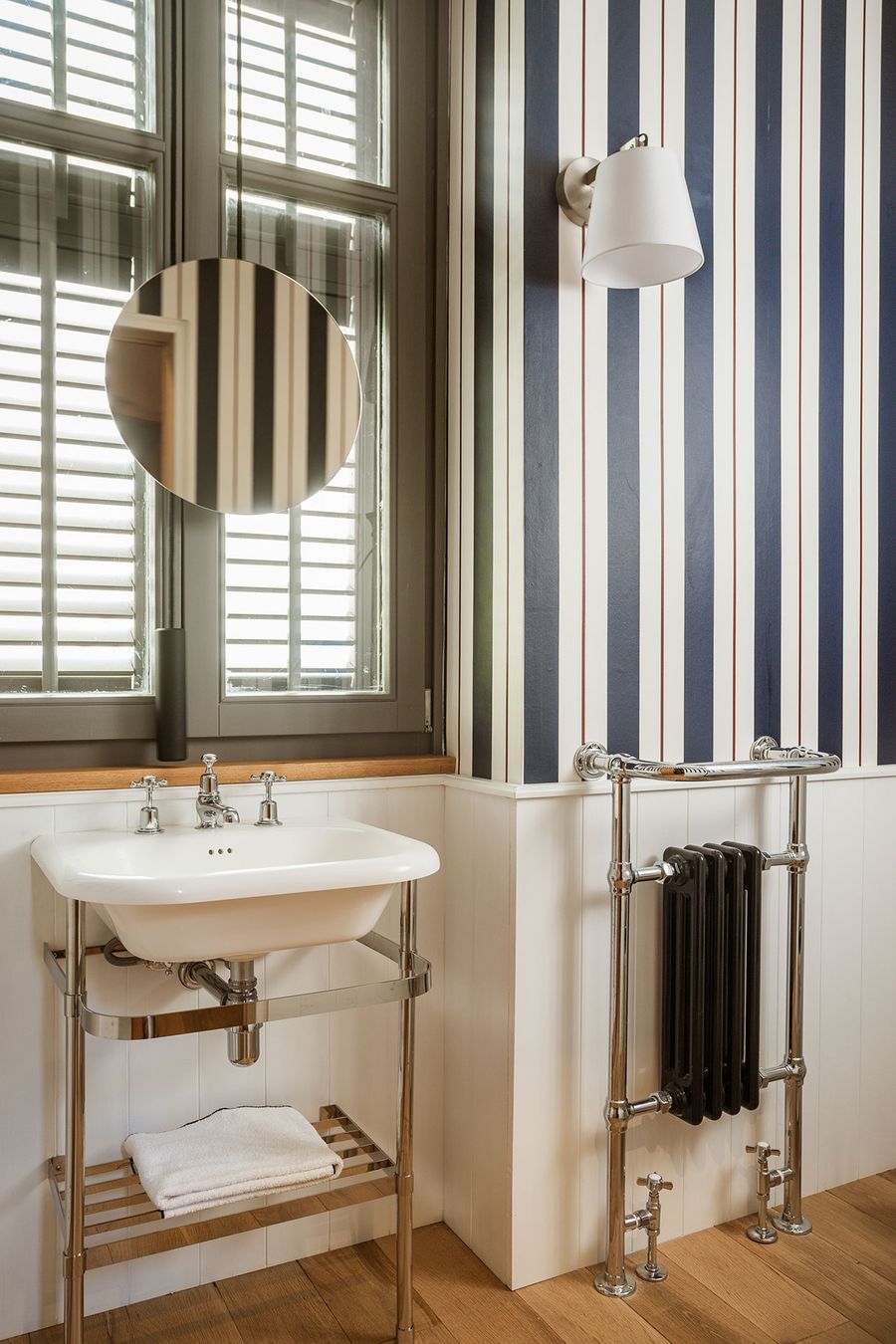
Photograpy © Costas Mitropoulos
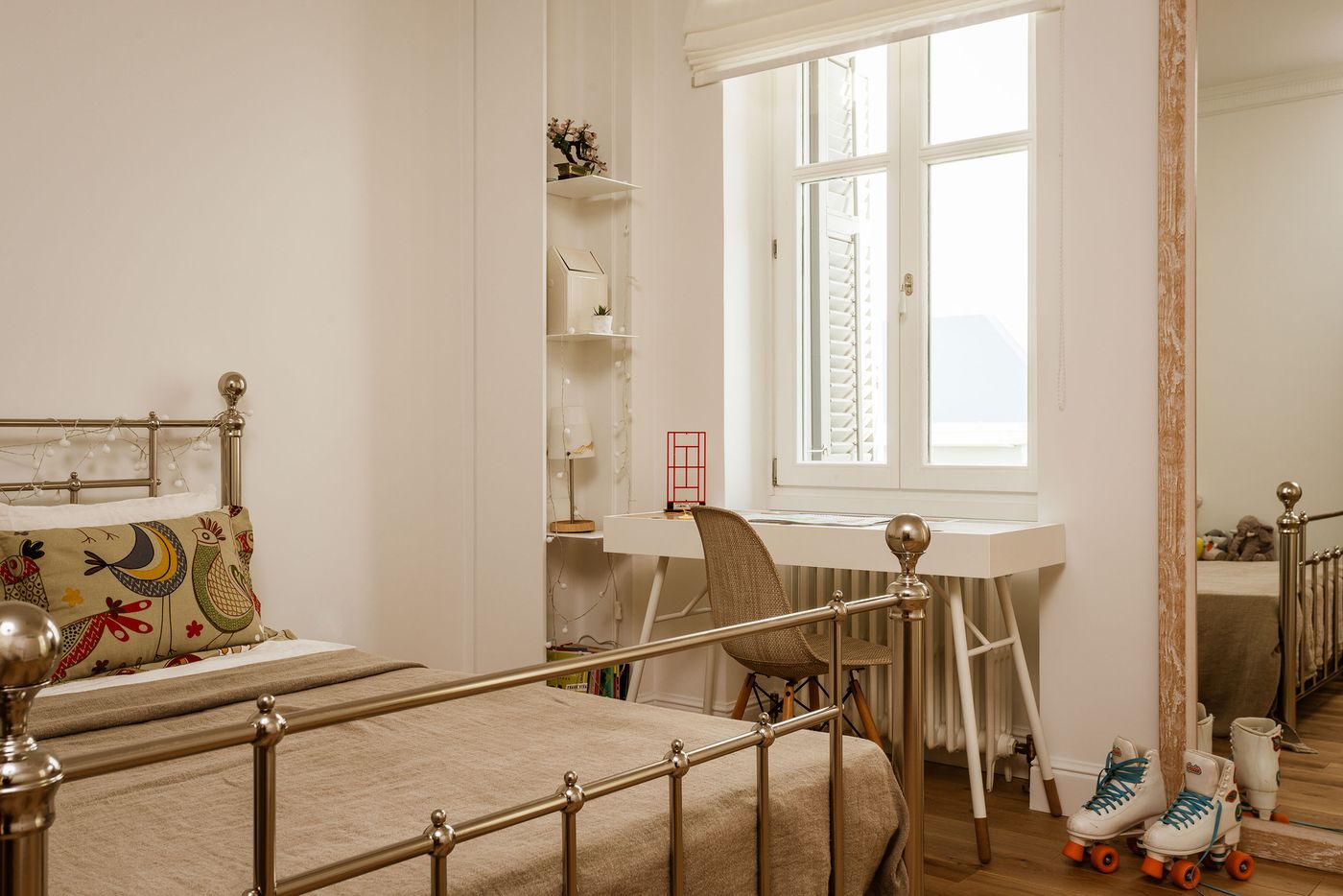
Photograpy © Costas Mitropoulos
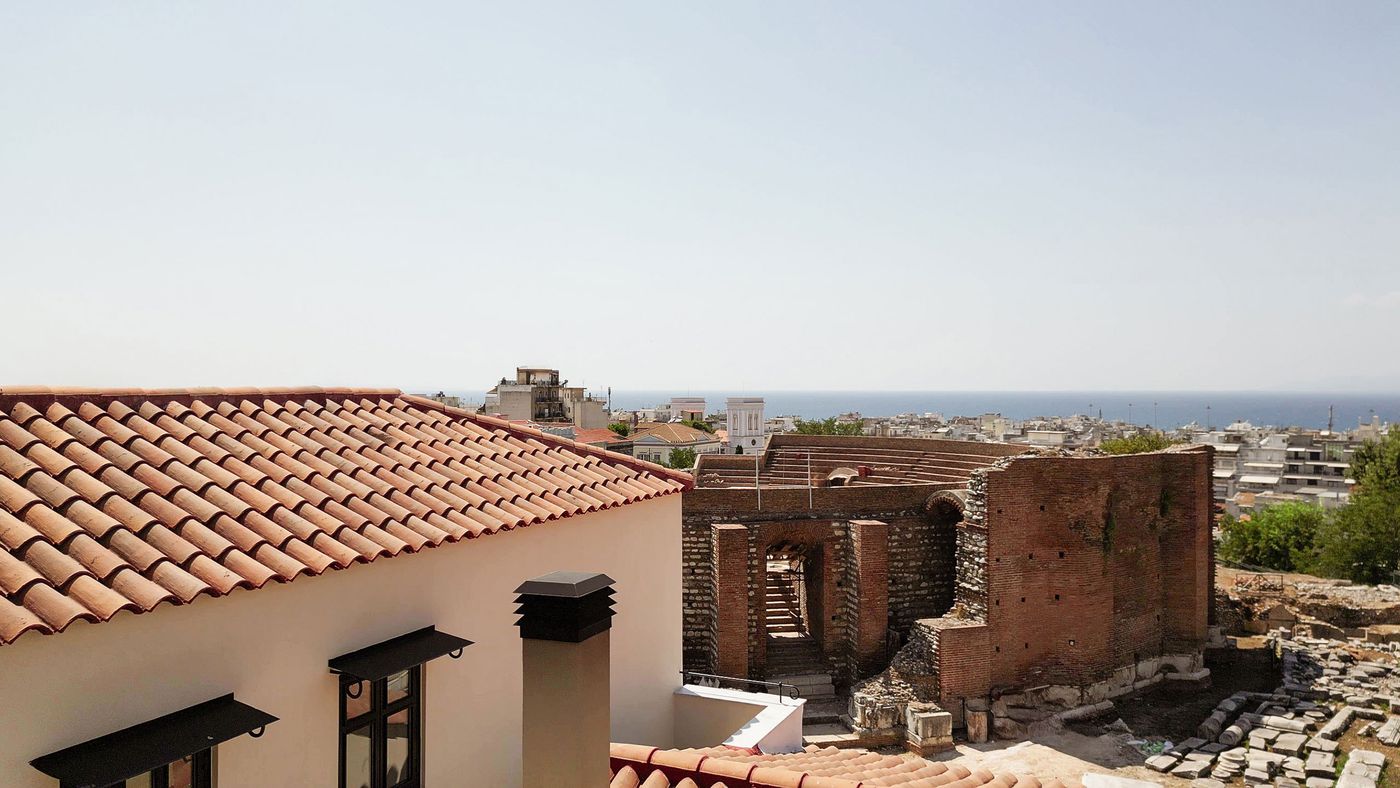
Photograpy © Costas Mitropoulos
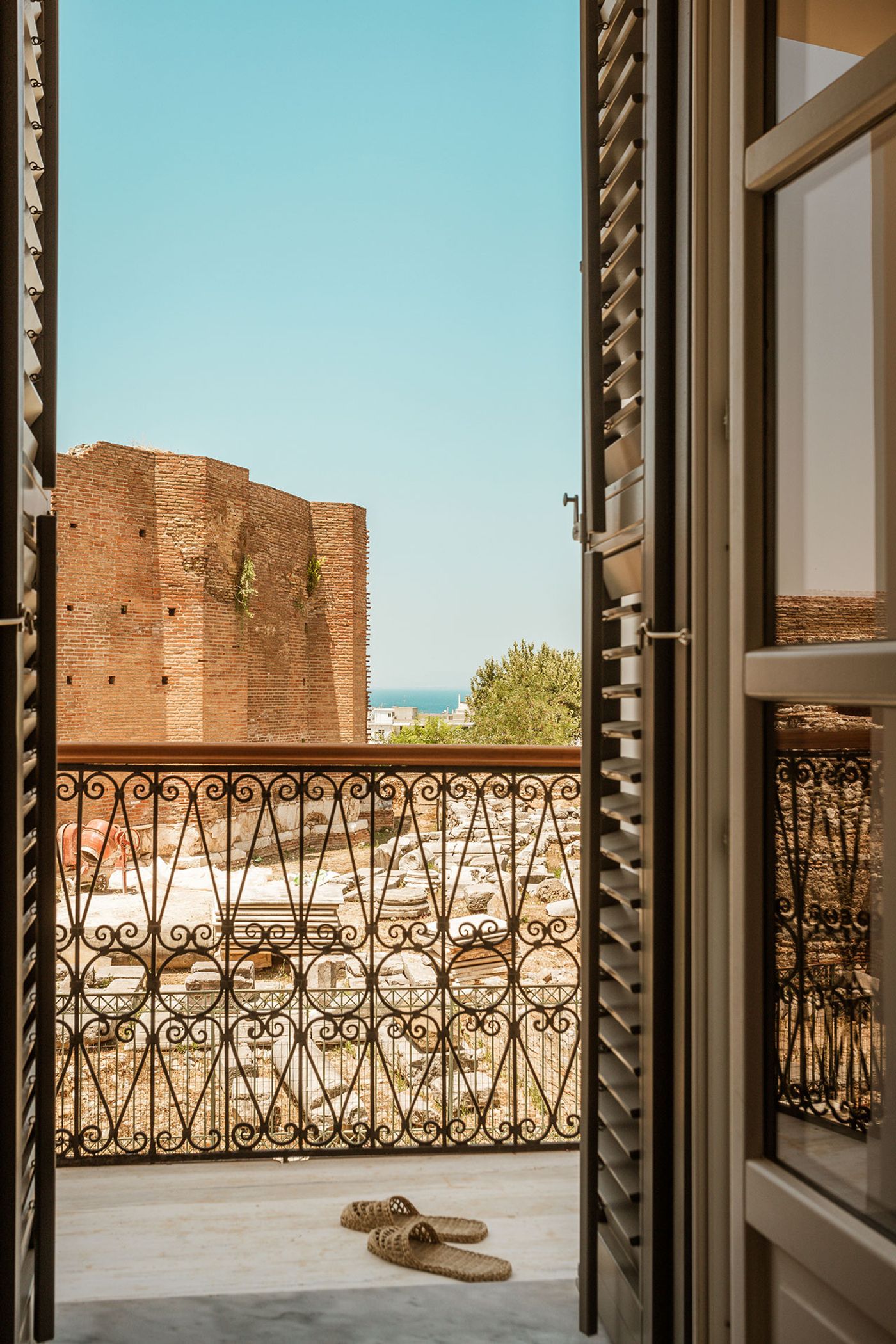
Photograpy © Costas Mitropoulos
